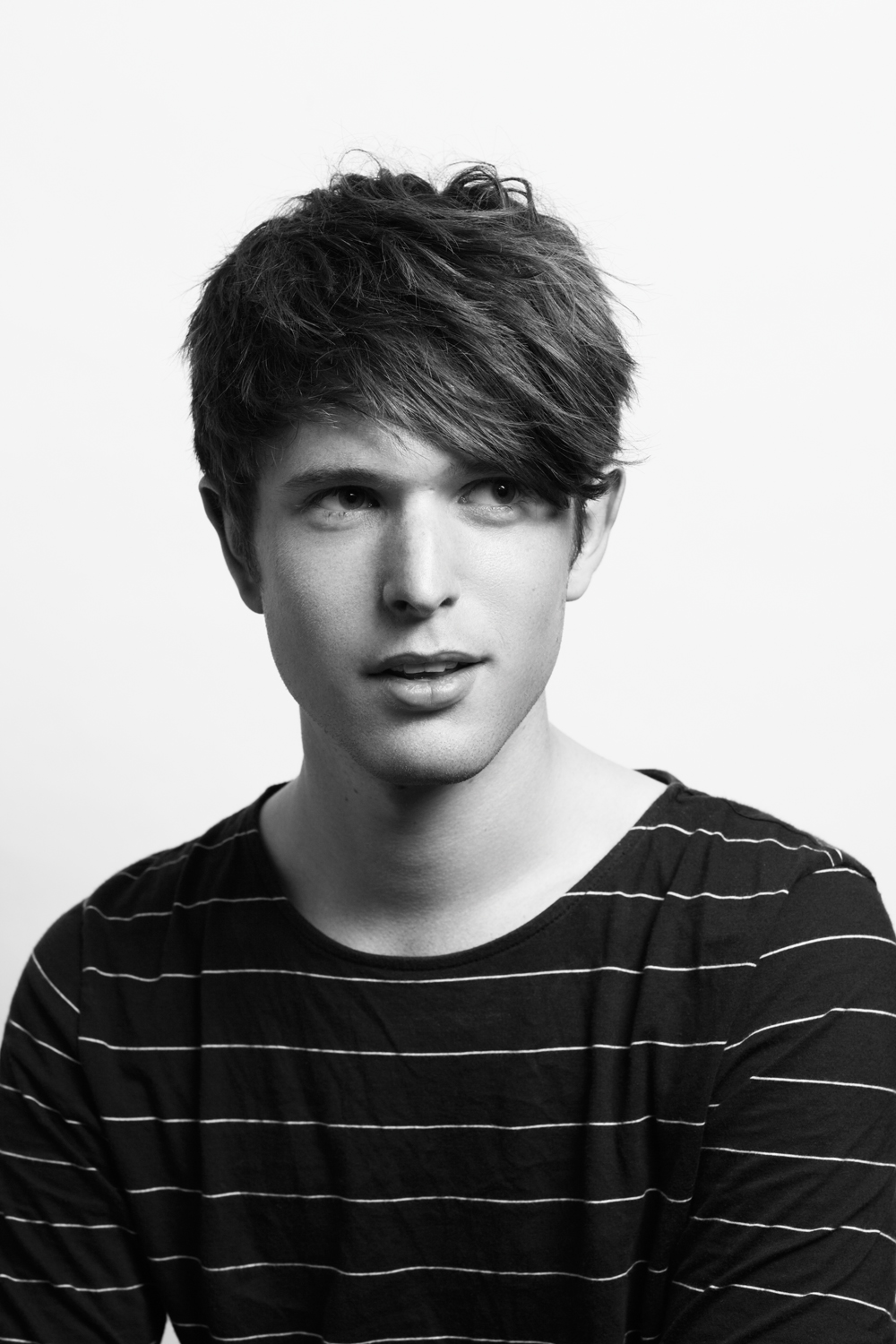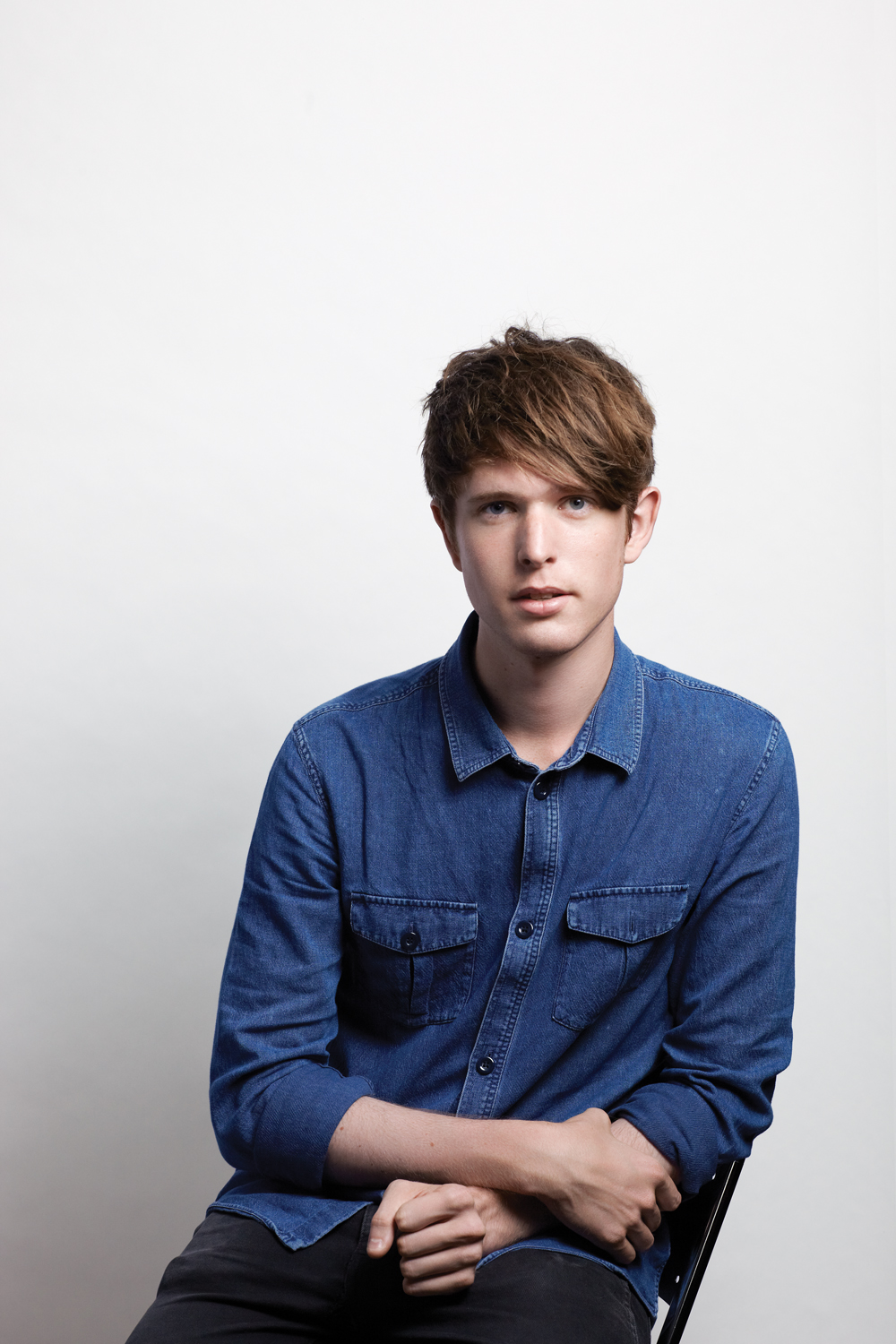
Photography by Olivia Beasley
Every artist dreams of making music that destroys boundaries and forces listeners to accept them on their own terms. On his self-titled debut album, James Blake has that and more with a panoramic suite of tunes that demolishes the structures of pop music to build a glittering new edifice on the rubble. Blake made the album at home using a laptop, mic, MIDI keyboard and a pair of speakers, but the sound he produced is as expansive and challenging as anything that you’re likely to hear this year. The album combines elements of classic balladry and R&B soulfulness with dubstep’s deep rumbling bass tones, odd time signatures, vocal loops full of glitchy effects, late night acoustic piano and a striking use of silence in unexpected places to create music with a sound that’s all its own. The songs are experimental, but accessible, and never sound like they’re trying to impress you with their cleverness.
“The sounds of dubstep can be felt in your body,” Blake says. “There’s a physical satisfaction to that and it adds another dimension to what you’re listening to. Producers like Mala, Loefah and the like know how to exploit that sub bass pressure; it can really send you to another place. My other big influence is Stevie Wonder, not least because he was so eclectic—a multi-instrumentalist with an unrivaled voice. For me it was really his voice at the end of the day. He’s my desert island artist.”
“My dad (James Litherland, who played with Colosseum, John Baldry, Leo Sayer, Steve Marriott and other UK heavies) was my only influence ‘til I was a bit older. He introduced me to the singers who I’d still count as my favorites, like Sam Cooke, and old blues and piano records by people like Professor Longhair, Sonny Boy Williamson and Howlin’ Wolf. The fact that he’d made a living making music, and knowing how hard it could be, made me feel like it was possible to do the same. He played guitar though, so at times he had to rely on other people in bands in order to get paid. The frustration with that eventually made him go solo and start recording and producing himself. That got me to experiment with making my own recordings as well. When I was growing up, my parents were both self-employed. They were the only people around me that worked for themselves and that made me realize the importance of being self-sufficient.”
Blake exploded onto the UK’s dubstep scene in 2009 with a series of singles he recorded on his own while he was attending college at Goldsmiths, where he took a course in popular music. “I mostly studied minimalism and gamelan, which are the biggest influences on my music from that course. I didn’t involve myself in the course enough to get much out of it. I spent most of my time writing at home, or doing other stuff. Minimalism changed the way I listened to music though, and I started avoiding the stop-start dance floor impatience of some of my earlier tracks.”
Those tracks included “Air & Lack Thereof ” and “CMYK,” which was named Radio One’s Record of the Week. They were Impressive and landed Blake a spot on the BBC’s list of artists to watch in 2011. Still, when he started working on James Blake, he found himself moving away from the dance floor into a more personal space. “The album came about through holding back these vocal, but still electronic, tracks until I had somewhere appropriate to release them. Over time I realized I was developing a body of music that had my candid voice as a running thread. Because of the sampling material and the way I’d treated it, the older songs didn’t fit into that thread.”

Photography by Olivia Beasley
Blake is a strong singer, with a warm, expressive tenor, and while some of the vocals on James Blake are straightforward expressions of his vocal timbre, more often his vocals are sampled, cut into pieces, processed and layered to become another element of the overall sound. He uses his voice as if it’s another instrument in the mix. This is notable on “Lindisfarne I,” an elegant bit of baroque pop that’s assembled entirely out of vocal samples. “My voice is the only one I’ve got I suppose. When you produce your voice in certain ways, manipulating it or not, you learn to analyze it like any other sound. That’s helped me to figure out what nuances I like and which one’s I want to avoid. Being involved in every stage of the process means that you have to do all of the menial stuff yourself, but mostly when my tracks are finished they usually sound how I wanted them and don’t need mixing down. Producing just becomes part of the writing process.”
Lyrically, Blake is more confessional than experimental. A lot of the emotions he expresses sound as much like diary entries as songs. “The lyrics don’t ever start as lyrics, but poems—without chords or melodies in mind. I can never seem to think logically at the same time as I’m singing. The melodies get pieced together after improvising over a lyrical passage, normaly months later after writing the poem itself. I pay a great deal of attention to the words. If they don’t grab me emotionally then I can never really identify with them, and the track, even if the beat or the chords are good, dies on its back.”
Blake finished working on his debut in late 2010, but before the album was released, it had leaked out over the Internet and created a sensation. It was soon obvious something big was going to happen. A video of Blake’s cover of Feist’s “Limit to Your Love” got five million hits when it was posted on YouTube, an accomplishment that he’s guardedly proud of. “It was pretty amazing,” he says. “But you’ve got to put that in a global perspective. Antoine Dodson (an African American man from the Lincoln Park Housing Project in Huntsville, AL, who had an interview on a local news station auto-tuned into a hot single by the Gregory Brothers in 2010) got over 80 million plays. Luckily, ‘Limit To Your Love’ was released after the album was already finished, so I didn’t feel any extra pressure. Saying that, for a few weeks, more people started coming to my DJ sets. They all left after I played that record. Suffice to say, I started dropping it in as the last tune.”
– J. Poet

